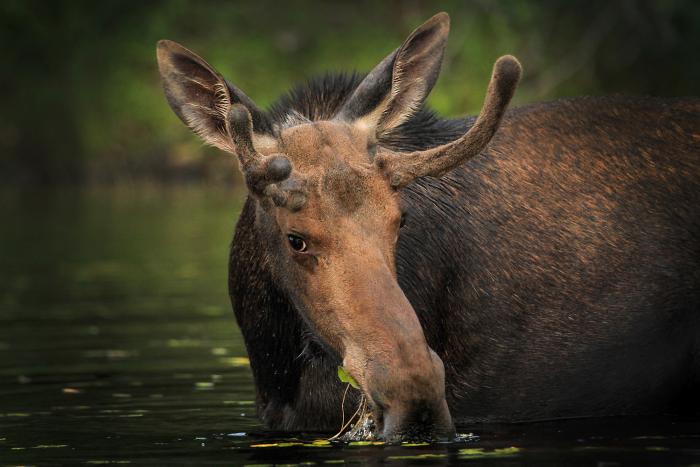
The moose stands tall as one of the national symbols of Canada. Stretching across the vast expanses of our lands, its population totals around 600,000. But depending on where you go, the mighty moose has been thriving or barely surviving.
In some areas of Canada, notably New Brunswick and some parts of Saskatchewan, moose numbers are growing. Newfoundland has a problem with overpopulation. But elsewhere in the country, the moose faces a giant challenge from a tiny source: the winter tick.
The winter tick is common in the USA, but north of the border rising temperatures due to climate change are seeing the winter tick become a scourge to Canada’s moose populations; populations in some areas have dropped by almost 50%.
In areas of Ontario and Manitoba especially, moose numbers are in steep decline. Vince Crichton, known by colleagues as “Dr. Moose”, grew up in central-north Ontario and has observed the moose’s decline in the 40 years he has been studying them.
“We used to be able to see 10 or 12 moose in a morning. Now it’s a waste of my time,” he said. “When populations go down like this to low numbers, the impact of disease, predation, incidental mortality becomes more of an issue.”
Crichton is against the hunting of any kind till populations levels become stable again. This is not so straightforward an issue though. Many Indigenous people across Canada depend on being able to hunt moose to survive because food costs are nearly double in the north. It’s not just a conservation issue, it’s a food security issue too. The Manitoba government has worked with its Indigenous groups to try and accommodate their needs in a hunting ban, according to wildlife manager Dan Bulloch.
“We talked to our constitutional people and basically the message we can take actions if we justify it but we have to go through a consultation process, which we did, and it seems to have worked well,” he said.
Out west, the fortunes of the moose vary from region to region.
The pine beetle infestation devastated the forest habitats in B.C moose favour. Combined with an expanding logging industry, which not only further destroyed the moose’s habitat, but also created roads which meant hunters had easier access to the moose population.
Bulloch said there needs to be pressure on the logging companies to make plans on how they are going to accommodate the moose populations, and “collaboration and co-management” along with the Aboriginal peoples in each province to help ensure the wellbeing of the moose and the people who depend on its survival.
The question of what is happening to the moose, and how to prevent its decline is not only a matter of national pride but of survival. Puzzled researchers continue to search the true north for answers.
Read more about the mixed fortunes of the moose and what is being done to save it in Canadian Wildlife magazine, Sep + Oct 2017 edition.
